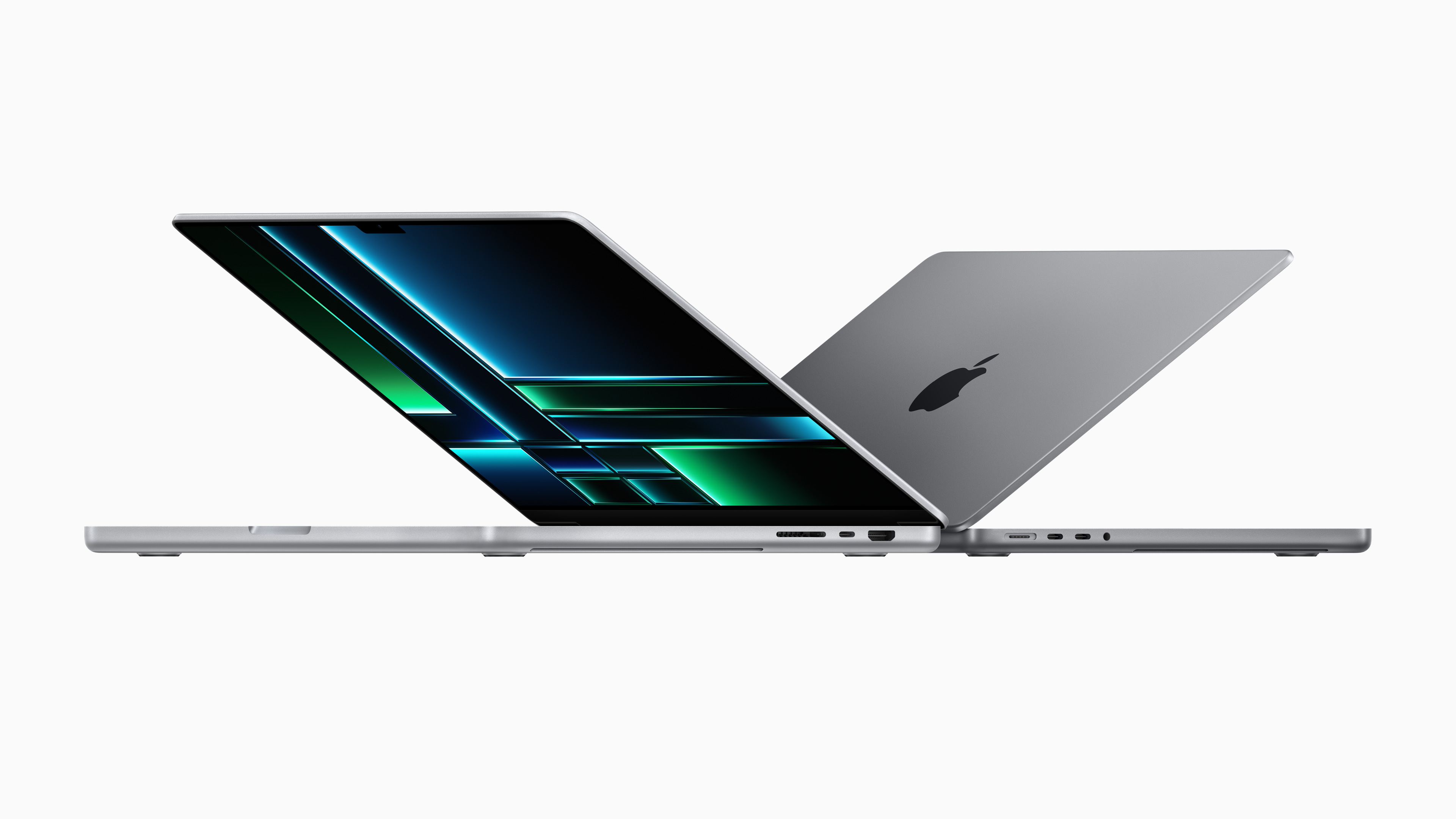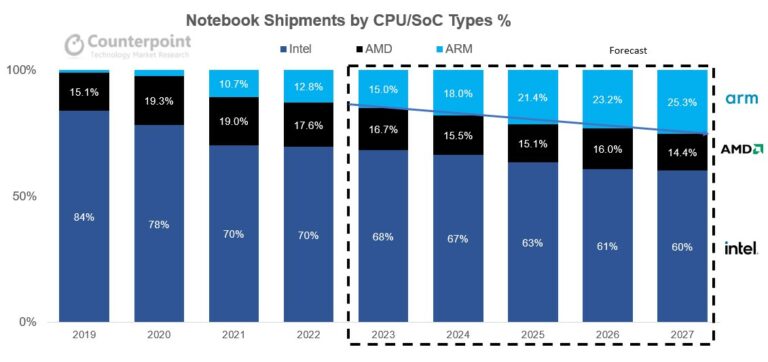
System-on-chips based on Arm instruction set architecture now command a 14% market share, but they are poised to at least double their share in several years, reports Counterpoint Research. Analysts note two main advantages that Arm-powered SoCs have over their x86 counterparts for now: lower overall power consumption and customization enabling richer features and higher performance.
Arm-based SoCs will command a 15% notebook processor revenue share of this year, but their share could increase to 25% in 2027. Meanwhile, Intel's share will decrease from 68% this year to 60% in 2027, whereas AMD's share will drop from 16.7% to 14.4%.
Nowadays, the vast majority (90%) of Arm-based notebooks come from Apple, limiting their growth as Microsoft's Windows is the world's most popular operating system. However, Counterpoint believes that once Qualcomm develops competitive Arm SoCs compatible with Windows, Arm's market share in the PC world will increase.

Arm-based SoCs have several benefits over x86 CPUs, such as reduced power consumption and better thermal management. Designed with energy efficiency in mind, these SoCs can be tailored to specific power needs, making them perfect for mobile devices and laptops where battery life is vital. Also, Arm-based SoCs can integrate a larger number of high-performance CPU cores and tightly integrated memory, something that not all x86 CPUs can offer. In addition, custom cores in these SoCs provide advanced features that off-the-shelf x86 processor cores do not offer these days, leading to enhanced hardware and operating system integration, the analysts note.
Also, Counterpoint mentions the built-in AI capabilities of Apple's SoCs and believes that those capabilities can be used for such workloads as image and video encoding and compression, noise cancellation, image recognition and vocal enhancement.
Counterpoint Research believes large PC vendors can introduce custom Arm SoCs tailored to their needs and featuring differentiation. For example, lower-power Arm processors can be used to build tablet-notebook hybrids that are lighter and longer lasting compared to today's 2-in-1 and convertibles.
As more makers with knowledge of Arm SoCs enter the market (e.g., smartphone suppliers), they contribute their know-how in Arm-based hardware and software, further enhancing the appeal of Arm-based PCs. The growing availability of native Arm-based applications will also improve user comfort and familiarity with the platform. The shift towards Arm-based PCs is anticipated to persist, and their market share is projected to rise substantially in the upcoming years.
What is noteworthy is that for now, Counterpoint Research makes no predictions about Arm adoption by desktops. While Arm SoCs have an indisputable advantage for laptops, desktops have different requirements. For example, they take advantage of high performance, and power consumption is not always crucial for desktops. Therefore, whether Arm will gain a significant share of the desktop space remains to be seen.







